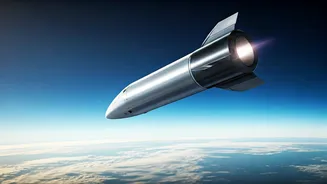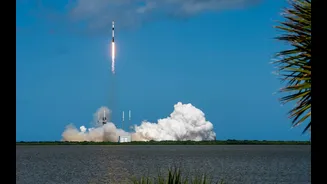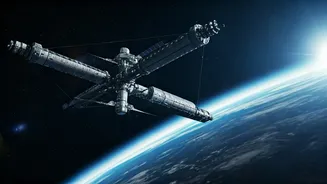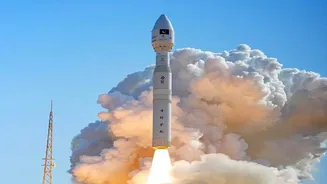Booster's Successful Reentry
The ninth flight of SpaceX's Starship witnessed a significant achievement: the successful reuse of a booster. This particular feat underlined the progress
made in reusable rocket technology, a core goal of SpaceX. The ability to bring a booster back, ready for another launch, dramatically cuts down on the costs associated with space travel. This is done by lowering the financial burden usually related to building new rockets for each mission. This mission showed that reusable rockets are getting closer to being reliable and useful, especially with this booster's successful landing.
Data Gathering and Insights
During its flight, the Starship mission diligently collected a wealth of data. The instruments on board were busy monitoring various aspects of the journey, including how the vehicle behaved during launch, its performance in space, and the complex process of re-entry. The gathered data will be crucial for refining the Starship design and making improvements. The information gathered from Flight 9 offers a chance to understand the challenges of spaceflight in order to improve designs. Scientists will use this data to fine-tune the spacecraft's design for future missions, ensuring its reliability and safety.
Vehicle Loss Analysis
Despite the positive aspects of the mission, including the booster's reuse and the data gathered, the main vehicle was lost during its landing attempt. Even though it's a setback, this loss provides invaluable information. Engineers will delve into the details of the vehicle's final moments to understand what went wrong. They will try to find out the reason for the failure during landing. This deep analysis allows them to pinpoint areas that need fixing and improvements for future missions. This kind of assessment is vital for making Starship safer and more reliable for transporting people and cargo into space.
Future Mission Planning
SpaceX is determined to use the lessons from Flight 9 to plan future missions. The company plans to build upon the data collected and the insights gained from the vehicle's loss. They plan to improve the design and operational procedures for upcoming Starship flights. SpaceX's long-term goal involves developing a fully reusable transportation system to make space travel more accessible. This commitment is reflected in their persistent efforts to learn from each flight, pushing the boundaries of what is achievable in space exploration. These efforts will eventually lead to safer and more effective space travel.
Impact on Space Travel
The Starship Flight 9 mission underscores the continuing evolution of space travel. The ability to reuse boosters and collect detailed data represents major steps towards more cost-effective and sustainable space exploration. While the loss of the main vehicle was a disappointment, it highlighted the challenges of spaceflight. SpaceX's efforts and the lessons learned from this mission play a key role in shaping the future of space exploration. It paves the way for deeper space exploration. The data gathered, along with SpaceX's continuous improvements, will change how space missions are approached.














